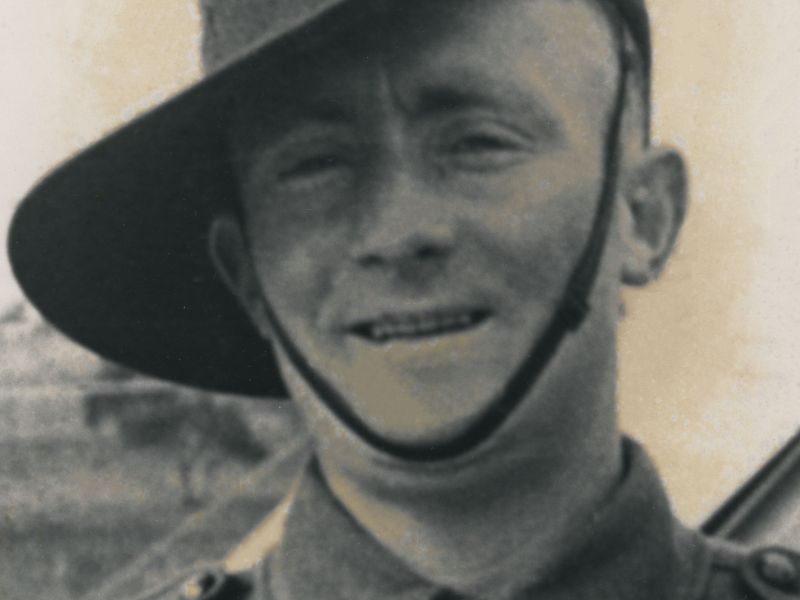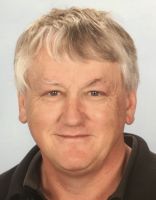Jack Robert Blossett
Jack Robert Blossett was born on the 2nd of February, 1918, at Windsor in Victoria. His father, George Robert Blossett, was 34 at the time, while his mother, Alma Maud (née Bennetts), was 33. Jack would be the youngest of a family of six children. His siblings were; Melinda May, Dorothy Maud, Alma Florence, Stanley, and Vera Evelyn.
Jack enlisted in the 2nd AIF on the 2nd of July 1940, at Wangaratta, in Victoria, being allocated the service number VX42331. At the time he was a single, 22-year-old road worker who lived in Corryong. His father, George, who Jack listed as his next-of-kin, was living at 56 Nicholson St, South Yarra, but would move in 1941 to 31 Argyle St, St Kilda. Being familiar with road construction, Jack would eventually be taken on strength with the 2/2nd Pioneer Battalion and train at Puckapunyal in Victoria.
On the 4th of April 1941, the 2/2nd Pioneer Battalion sailed from Sydney, for the Middle East, aboard the Queen Mary. On this journey the Queen Mary would sail in convoy with Queen Elizabeth and Mauretania (II). The battalion arrived in Port Tewfik, the port of Suez, in May, travelled by train to Palestine and camped at Hill 95. It began preparing for its first action supporting the 7th Division in Syria. The following is an excerpt from the Australian War Memorial describing the battalion's actions and what Jack would have been involved in.
“Initially the battalion did not fight as a whole - each of its companies supported different brigades. A Company went to the 21st Brigade at Er Rama and B Company to the 25th Brigade near Rosh Pinah.
When the attack began on 7 June A Company (of which Jack was part) was placed under the command of the 2/16th Infantry Battalion and had three tasks: breach the frontier fence at El Malakiya, a formidable obstacle of barbed-wire and iron picket; improve the approaches from the frontier road to the gap in the fence; and build a road across the fields to link with the road passing through Aiteroune. B Company had a similar task. At Metulla it prepared artillery approaches and improved the track from Mezudal and Banias. The men also assisted engineers to repair a crater in the road near Dan.
D Company joined the 25th Brigade and also assisted in maintaining and repairing roads. Several days later C Company came forward from Er Rama and began improving the rough track to Metulla for vehicles to pass.
But when the Vichy French counter-attacked Merdjayoun on 15 June the 2/2nd recalled its scattered companies to hold the Litani Bridge and prevent further enemy advance.
On 17 June the pioneers participated in the attack on Fort Merdjayoun. In a reckless decision, A and B Companies made a frontal attack on the fort. French machine-gun fire quickly stopped the attack and the Australians were exposed. Casualties mounted but the companies were pinned, unable to withdraw until evening. They suffered heavily: 27 killed, 29 captured, and 46 wounded.
Despite the losses the battalion remained in action for the rest of the campaign. It was particularly active in the fighting around Merdjayoun and El Mtolle and in the attack on Damour in July.”
During the above period, Jack was promoted to Lance Corporal, but after having that rank for one week asked to be reverted back to the rank of private.
“Following the surrender of the Vichy French the battalion concentrated first at Damour and then near Tripoli, bivouacking in the olive groves opposite Fort Legout. For the next four months the battalion trained and conducted garrison duties, with each company sent to different locations as needed. In November the pioneers moved to Qatana.”
It was during these garrison duties that Jack committed the offence of disobeying a lawful command given by a superior officer. Unfortunately, the nature of the command was not recorded. For this offence, he was given 5 days CB (confined to barracks).
With the Japanese entering the war in December of 1941, the 6th and 7th Divisions returned to Australia. The 2/2nd began the voyage home on the troopship Orcades. The 2/3rd Machine Gun Battalion, 2/6th Field Company, and other support units were also on board.
With British forces having surrendered in Singapore on the 15th of February, the Oracades disembarked her troops at the port of Batavia (now Jakarta), Java, in Indonesia. The troops aboard Orcades, as well as a battery of American artillery, and a squadron from the 3rd King's Own Hussars, combined to defend Java. They became known as "Blackforce", after their commanding officer, Brigadier Arthur Seaforth Balckburn VC. This move was more political than strategic and very little support was provided to the unit.
The Japanese landed on Java on the 28th of February. Blackforce went into action at Leuwiliang near Buitenzorg on the 4th of March. It fought against the Japanese for two days but was ordered to lay down arms the day after the Dutch surrendered on the 8th of March. The enormity of the surrender was best illustrated by the list of missing soldiers from Victoria that appeared in the 29th of July 1942, issue of the Weekly Times, as it ran for over two pages of small type!
Jack was listed as missing in action on, or around, the 30th of April 1942. In December 1945 information was received that indicated Jack had been killed in action on the 4th of March 1942. His name is listed amongst those with no known grave on the Singapore Memorial Kranji War Cemetery and he is also remembered at the Australian War Memorial Roll of Honour and the Corryong War Memorial. For his service, he was awarded the Pacific Star, the 1939-1945 Star, the Defence Medal, the War Medal 1939-1945 and the Australian Service Medal 1939-1945.

 Stephen Learmonth
Stephen Learmonth